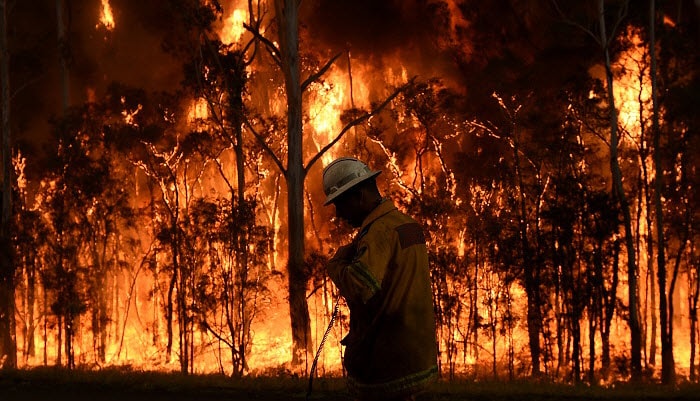Safeguarding Your Home: The Vital Function of a BAL Report in Bushfire Readiness
Safeguarding Your Home: The Vital Function of a BAL Report in Bushfire Readiness
Blog Article
Ensuring Shrub Fire Defense Via Correct BAL Record Analysis
In the realm of bush fire security, the thorough evaluation of Bushfire Attack Level (BAL) reports stands as a keystone for securing buildings against the damaging effect of wildfires. With ecological factors and residential property characteristics playing substantial roles in figuring out the degree of risk, a complete understanding of BAL rankings becomes critical.
Understanding Bushfire Assault Degree (BAL)
In the realm of bushfire protection, comprehending the Bushfire Attack Level (BAL) is critical for ensuring effective mitigation strategies. Understanding the BAL ranking of a residential or commercial property is essential for residential property policymakers, proprietors, and home builders to apply ideal procedures to protect versus bushfire dangers.
/cdn.vox-cdn.com/uploads/chorus_image/image/66063681/GettyImages_1197451354.0.jpg)
Importance of BAL Report Evaluation
An essential aspect in bushfire protection preparation entails the detailed evaluation of BAL reports to evaluate the potential risks and determine appropriate reduction approaches. BAL records supply important info regarding the prospective impact of bushfires on a home based on various variables such as plants type, distance to possible fire dangers, and slope of the land. Assessing these records with precision is paramount in creating efficient bushfire security measures customized to the particular risk account of a residential or commercial property.
Executing Fire Defense Procedures
Implementing effective fire security procedures is crucial for protecting residential or commercial properties in bushfire-prone areas. This includes clearing up combustible vegetation, such as dry leaves and branches, within a specific span of the residential or commercial property.
Moreover, having a sufficient and properly maintained water supply, such as a container or pool, can aid firemens in their initiatives to secure the home. BAL Report. Overall, carrying out a combination of these fire defense steps can dramatically enhance the opportunities of protecting properties throughout bushfire events.
Mitigating Risks in Fire-Prone Areas
To strengthen homes versus bushfire risks, a critical concentrate on mitigating threats in fire-prone areas is essential. Mitigating threats in fire-prone areas entails an extensive strategy that encompasses numerous measures to decrease the chance and effect of bushfires. One critical aspect of danger reduction is maintaining defensible area around properties by removing combustible plant life, guaranteeing ample spacing between frameworks and trees, and using fire-resistant landscaping techniques. check my site Additionally, carrying out ember-proofing actions such as installing metal mesh screens on windows and covering roofing dental caries can aid prevent cinder assaults and lessen the danger of place fires.
Moreover, building or retrofitting buildings with fire-resistant materials and guaranteeing proper upkeep of roof coverings, seamless gutters, and external cladding can substantially boost the property's resilience to bushfires. Establishing and practicing a bushfire emergency strategy with all passengers, including evacuation treatments and communication strategies, is additionally crucial in mitigating risks properly. By taking on an aggressive method to take the chance of reduction in fire-prone areas, residential or commercial property proprietors can better shield their assets and boost overall bushfire readiness.
Ensuring Property Safety And Security and Resilience
Making certain the security and strength of properties in fire-prone locations calls for an unfaltering dedication to robust safety nets and critical preparation. Residential or commercial property safety and security begins with executing reliable measures to minimize fire threats. This includes preserving a defensible room around the property by removing flammable plants, ensuring proper maintenance of gutters and roofings, and making use of fireproof structure materials. Regular maintenance of firefighting devices, such as pipes and lawn sprinkler systems, linked here is additionally crucial to home durability.
Resilience, on the various other hand, entails the capacity of a property to withstand and recover from a bushfire. This can be improved with the installation of ember guards on vents and home windows, making certain that entrance points for embers are decreased. In addition, having a well-thought-out evacuation strategy and exercising it on a regular basis can substantially enhance home durability. Collaborating with next-door neighbors and regional fire authorities can also strengthen the security and resilience of buildings in fire-prone areas. By proactively addressing these facets, homeowner can much better secure their possessions and enjoyed ones from the risk of bushfires.
Final Thought
Finally, guaranteeing bushfire defense through appropriate BAL record analysis is vital for understanding the level of threat posed by bushfires and executing essential fire protection procedures. By minimizing risks in fire-prone areas and making sure residential or commercial property safety and durability, communities and individuals can much better plan for and reply to bushfire events. It is critical to focus on fire precaution to shield lives and residential property in these risky environments.
In the realm of bush fire protection, the meticulous analysis of Bushfire Attack Level (BAL) reports stands as a foundation for protecting buildings versus the terrible impact of wildfires (BAL Report). Understanding the BAL rating of a home is vital site for building home builders, proprietors, and policymakers to carry out proper steps to safeguard versus bushfire hazards

BAL records give crucial info regarding the prospective influence of bushfires on a property based on different aspects such as plant life kind, range to possible fire hazards, and incline of the land (BAL Report). Overall, implementing a combination of these fire protection steps can considerably enhance the possibilities of securing residential properties throughout bushfire occasions
Report this page